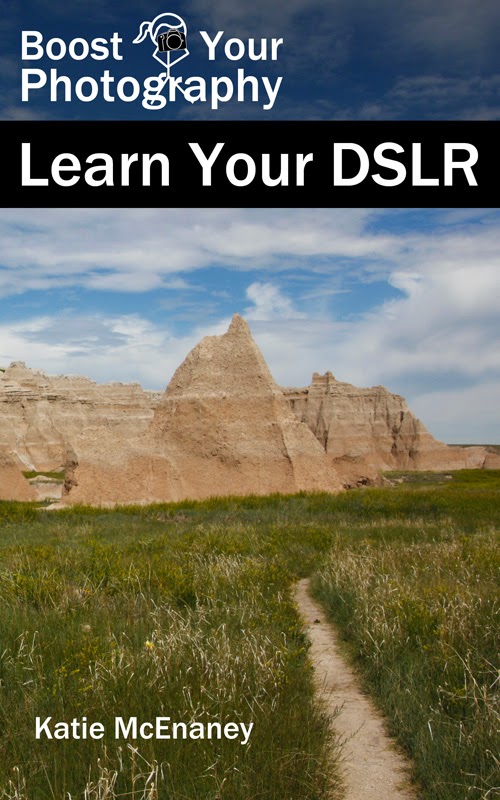There are primary forms of shooting modes for your digicam, regularly known as the basic and innovative modes. The fundamental modes consist of Auto and the pre-programmed modes, together with portrait, panorama, macro, and night time. The creative modes are so referred to as because they provide you with, the photographer, more innovative manage over the very last photograph.

This month'sBoost Your Photography: 52 Weeks Challenge is focusing the different creative shooting modes available on your camera: program mode, shutter priority mode, aperture priority mode, and manual mode. Even if you use a point-and-shoot camera, most come equipped with a version of program mode that will also give you more creative control over your camera.
All approximately Program Mode
Program mode is my go-to default mode for taking photographs and is part of my "Camera Zero" settings that I always return my camera to when I am done shooting. (To read more, check out the article Missed the Shot? Remember Camera Zero.)
I want to consider program mode as "car plus." Just like in automobile, the digicam will set each your aperture and shutter pace, based on its calculation of the right exposure. (Read extra approximately correct and creative publicity in the article All approximately Exposure.) Unlike vehicle mode, however, program mode offers several crucial alternatives for improving your pictures:
- Control over the ISO. In program mode, you set the ISO value, whereas in Auto, the camera sets the ISO. Controlling the ISO allows you to control the possibility of noise in your photographs (present at higher ISO values). Set your ISO to the lowest value, often ISO 100 to avoid noise. Read more in ISO Basics.
- Program shift. When you hold the shutter button down halfway, your camera will display the aperture and shutter settings it intends to use. In program mode, you can shift those values to a different set of equivalent exposures. So, for example, if your camera chose f/3.5 and 1/640, you can spin the dial to shift to an equivalent exposure such as f/10 and 1/80. (Read more about equivalent exposures and their application here.) This ability to shift the values gives you immediately flexibility when shooting, and you can respond rapidly to any changing photography situation.
- Exposure Compensation and AE Lock. Another way to control your exposure in Program mode is using the exposure compensation graph. You can manually set your camera to over- or under-expose the images, compared to its calculated exposure. Or you can use AE Lock to set where in the photograph the camera calculates the exposure. Read more about exposure compensation here and AE Lock here.
- Set the picture style. All of the creative modes allow you to select different picture styles for your shot. A picture style is a set of parameters that control the sharpness, contrast, and color for your JPEG. Many cameras have options such as standard, landscape, portrait, neutral, and monochrome. For my Canon Ti brand camera, I cannot shoot in monochrome (black and white), unless I choose a creative shooting mode, like Program mode.
- Set the while balance. Setting and adjusting the while balance can make huge improvements in your photographs. If you shoot in RAW, you always have the option to adjust the white balance in post-processing. If you shoot in JPEG, however, program mode gives you the option to adjust your white balance by choosing from a variety of pre-programmed and custom white balance modes. (Read more about Strategic White Balance here.)
- Control your focus mode and focus points. Program mode allows you to utilize all of the different focus modes on your camera (one shot, servo, focus, etc.), as well as to use manual focus point selection. Switching from auto autofocus point selection to manual lets you choose a single autofocus point for the camera to use, allowing you control over exactly what in your composition is being used to set the focus. (In auto mode, your camera might decide that the fence in the background is more interesting for focus then the eye of the person you are shooting, which will result in a disappointing out-of-focus image.) Get the full details in the article Focus on Focus.
- Own your flash. Flash is an important tool for photographers, but it is a tool that you want to control. In Auto and other basic modes, the camera will decide when to use the flash, and your flash will pop up automatically. You will not have the option to take your photograph without the flash. In Program mode, you choose whether to deploy your flash or not.
![]()

Give Program Mode a Try
Do you normally shoot in Auto or another basic mode? This week, set that dial to Program mode and give it a try. Dial in ISO 100, try setting a single manual focus point (start with the center one), and see what a difference a little more creative control can make for you. If you really want to see the difference, toggle back-and-forth between Auto and Program mode in a few different situations, and see what differences you find in your final shots.Not positive about the rest of your settings? Check out the thing Missed the Shot? Remember Camera Zero to see the information at the back of my recommended default camera settings.
Share a link or a photograph in the comments below, or consider joining the BYP 52 Weeks Google+ Community to share your weekly photograph and see what others are capturing.

Boost Your Photography: Learn Your DSLR is to be had from Amazon. Get the maximum from your digital camera with realistic advice about the technical and creative aspects of DSLR photography in order to have you taking lovely snap shots proper away.
No comments:
Post a Comment